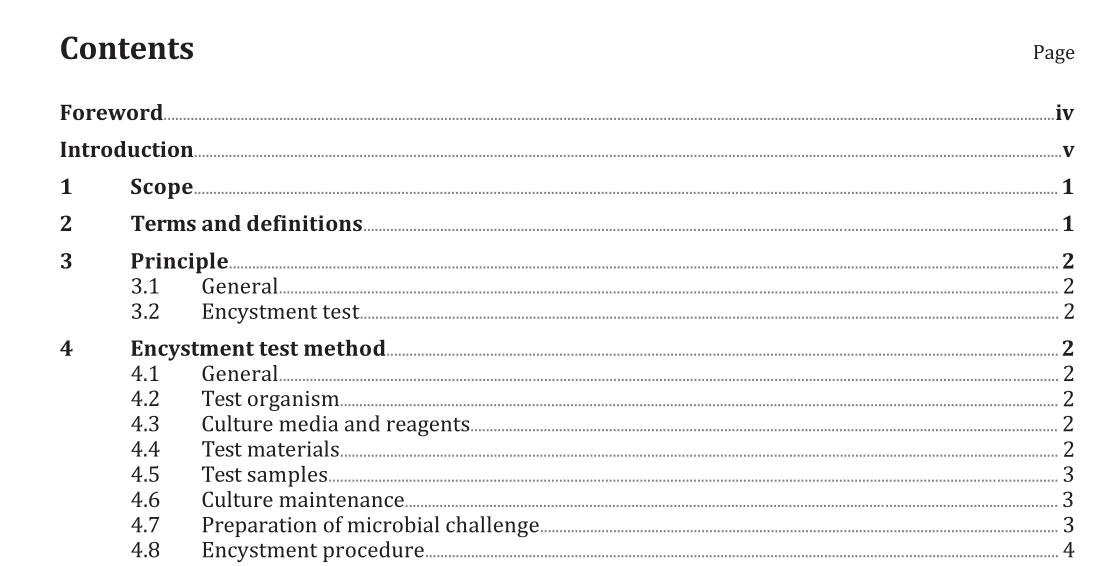BS ISO 19045:2015 pdf download.Ophthalmic optics — Contact lens care products — Method for evaluating Acanthamoeba encystment by contact lens care products
1 Scope
This International Standard specifies a method for evaluating the potential of products for contact lens disinfection to induce encystment of Acanthamoeba species. This method excludes the evaluation of oxidative systems that require a special lens case for use. This International Standard does not address the evaluation of disinfection efficacy of contact lens disinfecting products.
2 Terms and definitions
For the purposes of this document, the following terms and definitions apply.
2.1 trophozoite
motile, feeding amoeboid form of Acanthamoeba
2.2 encystment
phase in the life cycle of Acanthamoeba where the trophozoite stage transforms into the cyst stage
2.3 mature cyst
dormant form of Acanthamoeba composed of an inner and outer cell wall, typically more resistant to a range of challenges than trophozoites (2.1)
Note 1 to entry: Challenges include heat, dehydration, chemical, etc.
2.4 immature cyst
cyst comprised only of the inner cell wall
2.5 room temperature
temperature defined as 18 °C to 25 °C
2.6 passage
transfer or transplantation of cells, with or without dilution, from one culture vessel to another
Note 1 to entry: It is understood that any time cells are transferred from one vessel to another, a certain portion of the cells may be lost and, therefore, dilution of cells, whether deliberate or not, can occur.
Note 2 to entry: This term is synonymous with the term “subculture”. [10]
2.7 passage number
number of times cells in the culture have been subcultured or passaged (2.6) [10]
3 Principle
3.1 General
The assay tests the capability for a solution to induce Acanthamoeba trophozoite encystment as this physiological event can afford the organism protection from disinfection.
3.2 Encystment test
The encystment test is used to measure a disinfecting solution’s potential for inducing trophozoite encystment to either the immature or mature cyst form. Assessment of this phenomenon is considered important as Acanthamoeba cysts can be resistant to many disinfecting systems at operating conditions. In the encystment test, contact lens disinfecting solutions are exposed to Acanthamoeba trophozoites. Following detergent treatment and calcofluor white staining to lyse remaining trophozoites and stain the inner cell wall, the organisms are observed microscopically for the production of immature and mature cysts.
4 Encystment test method
4.1 General
Prior to conducting encystment studies, personnel should be trained and experienced in the following:
a) culturing and manipulating Acanthamoeba;
b) recognizing immature and mature cyst forms;
c) calculating the level of cyst formation as described in this International Standard.
4.2 Test organism
4.2.1 A. castellanii (ATCC 50370).
4.3 Culture media and reagents
4.3.1 Ac#6 axenic semi-defined Acanthamoeba growth medium (see Annex A).
4.3.2 1/4 strength Ringer’s solution (see Annex B).
4.3.3 Sarkosyl-Calcofluor White (see Annex C).
4.3.4 Encystment positive and negative control solutions (see Annex D).
BS ISO 19045:2015 pdf download
